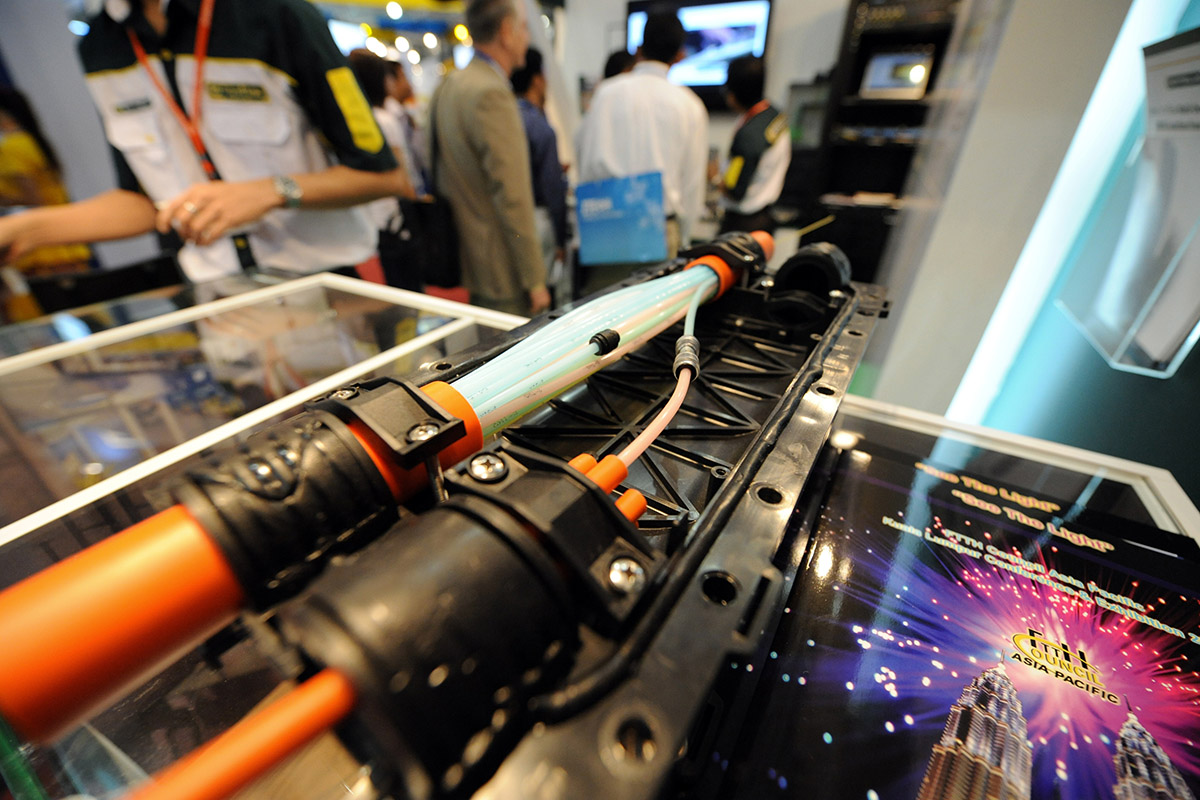Do you know how the internet works? Have you ever wondered how you could be sitting at home in Singapore or any other Southeast Asian country and be able to watch the latest "Game of Thrones" trailer on YouTube which was released in the US? While many may think that we have the satellites to thank for this technological advancement, undersea cables actually transmit 99 percent of all international data according to the Business Insider.
This is made possible by the invention of the fibre optic cable, which is a network cable that contains strands of glass fibres inside an insulated casing designed for long distance data transmission, high performance data networking and telecommunications.
If you cut an undersea cable open, you will notice that it consists strands of flexible, transparent fibre made from drawing glass – also known as silica – or plastic slightly thicker than a human hair. It carries communication signals through pulses of light generated by small LEDs (lasers or light-emitting diodes).
The advantages of fibre optic cables
A fibre optic cable is capable of providing higher bandwidth when compared to a conventional copper cable with similar thickness. Since fibre optic cables transmit data through light and light can travel a longer distance without losing its strength, they are a more reliable alternative to conventional cables when it comes to transmitting data across the globe.
Fibre optic cables are also less susceptible to interference while the traditional network cable is easily disrupted by electromagnetic interferences.
Internet speed across Southeast Asia
In an earlier article, The ASEAN Post covered the digital landscape and internet penetration rate across Southeast Asian nations. While the rising internet usage across the region is contributing to its growth in e-commerce and the economy, a stable high-speed internet is just as important in driving the digital economy.
As of August 2017, Singapore tops the Speedtest Global Index with a download speed of 156.25 Mbps (megabits per second) in the "fixed broadband" category – far ahead of second-place Hong Kong (140.83 Mbps). Thailand (36.64 Mbps) is the second highest ranked Southeast Asian nation, followed by Vietnam (24.15 Mbps), Malaysia (20.63 Mbps), Brunei (14.73 Mbps), Indonesia (13.38 Mbps), the Philippines (13.29 Mbps), Cambodia (9.81 Mbps) and Lao (8.64 Mbps). Myanmar is the worst performing country in the region with a download speed of 7.96 Mbps. However, the country has risen six rungs from its previous ranking in July 2017.
Governments of the 10 ASEAN (Association of Southeast Nations) countries are looking at boosting communication infrastructures in order to achieve greater economic growth. In Thailand, the Thai government rolled out the Thailand 4.0 plan in its bid to become Southeast Asia's leader for all things digital. "Our goal is to demonstrate that Thailand is the best place in ASEAN for digital innovators to invest, build businesses and to grow in Southeast Asia," said Pichet Durongkaveroj, Thailand's Digital Economy and Society Minister in a press statement.
"Thailand has the creativity and the entrepreneurial spirit to be a digital hub in Southeast Asia, particularly for businesses that require high levels of creative inputs," he added.
Meanwhile, Malaysian authorities are looking at improving network coverage infrastructures in East Malaysia. "Internet connectivity has become a way of life in a fast-paced world and there is a growing demand for powerful connectivity to meet the needs of users," said Musa Aman, Chief Minister of the Sabah state during an event.
